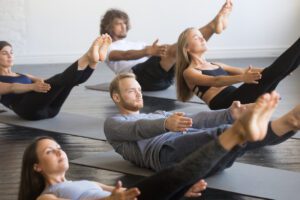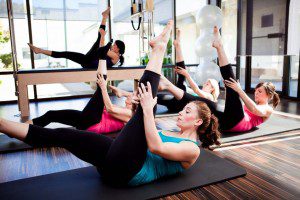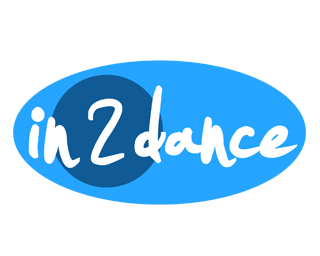Pilates Matwork
March 11, 2024
If you are new to matwork Pilates, you might be wondering what to expect during your first mat-based session.
A Pilates mat class will typically include exercises performed from six start positions: standing, sitting, supine (lying face up), prone (lying face down), 4-point kneeling (hands and knees/all fours), and side-lying. These start positions challenge our core stability, strengthen our muscles, and mobilize our joints by orienting our body in different ways against the forces of gravity.
The focus of most Pilates exercises is strengthening our core muscles (pelvic floor, abdominals, spinal extensors, diaphragm); gaining awareness and control over the position of our core body (head, shoulder girdle, spine, and pelvis); developing strength and mobility in the spine; moving all the major joints of the body through their full range of motion; and strengthening the small muscles that support our joints.
Your teacher will often ask you to find neutral pelvis and spine in the start position before each exercise begins. Sometimes we keep the pelvis and spine in neutral while we move the arms and legs—asking our core and deep intrinsic muscles to act as stabilizers. Other times, we mobilize the spine sequentially, or move the spine and pelvis in and out of neutral. All this attention to neutral pelvis and spine helps to improve our spinal alignment, particularly the relationship of the low back to the pelvis.
Breathing is extremely important in Pilates, so your teacher will cue you when to inhale and exhale during each phase of the exercise. In Pilates we typically use lateral breathing, meaning we breathe into the sides and back of our ribcage, allowing us to engage our abdominals while supplying our bodies with oxygen. If you feel too overwhelmed to think about your breathing in addition to everything else, just focus on full inhalations and exhalations. We don’t want to hold our breath! Specific breathing patterns can be layered on as you become more comfortable with the movements.
Pilates exercises are often performed at a slower pace, allowing us to focus on breathing, using good form, and engaging the right muscles. The focus of Pilates is not cardiovascular, so you will need to incorporate other kinds of exercise to specifically train heart health. Pilates is low-impact and gentle on the joints, so again you will need to incorporate higher-impact workouts if your goal is building bone density.
 Many Pilates instructors use hands-on corrections (tactile cueing) to help you find the movement or engage the right muscles. It’s always up to you whether you want to receive tactile cues, so be sure to communicate with your instructor whether you are comfortable being touched.
Many Pilates instructors use hands-on corrections (tactile cueing) to help you find the movement or engage the right muscles. It’s always up to you whether you want to receive tactile cues, so be sure to communicate with your instructor whether you are comfortable being touched.
Your instructor may include exercises that target the pelvic floor, since this is part of the deep core that we engage in Pilates. If you’ve never done pelvic floor exercises before, you may struggle to find the right muscles or remember to engage them. Be patient! It gets easier with practice.
Pilates takes a very detail-oriented approach to movement, so it is important to be patient and consistent in your training! Your instructor is there to answer your questions and guide you through the process.





